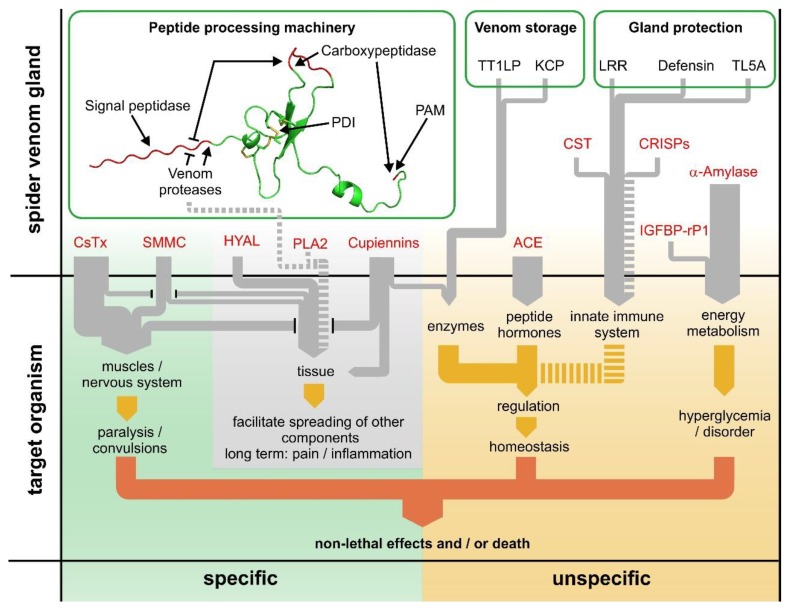Figure 10.
Dual prey-inactivation strategy of the venom of C. salei based on specific (left) and unspecific (right) venom pathways. Main interactions of the major venom components are shown in the venom gland (upper half) and, after venom injection, in the target organism (lower half). The specific pathway, mainly based on neurotoxins and other compounds, usually leads to death. The unspecific or metabolic pathway, based on a variety of regulatory elements, disturbs homeostasis or leads to hyperglycemia. The thickness of the gray arrows indicates the estimated impact on the prey. Dashed lines represent vague or uninvestigated connections (for further details compare text). ACE, angiotensin-converting enzyme; CRISPs, Cysteine-rich secretory proteins; CST, cystatin; CsTx, Cupiennius salei toxins; HYAL, hyaluronidase; IGFBP-rP1, insulin-like growth factor-binding protein-related protein 1; KCP, Kunitz domain-containing protein; LRR, leucine-rich repeat domain-containing protein; PAM, peptidylglycine α-amidating monooxygenase; PDI, protein disulfide isomerase; PLA2, phospholipase A2; SMMC, small molecular mass compounds; TL5A, tachylectin 5A-like protein; TT1LP, thyroglobulin type-1 domain-like protein.

